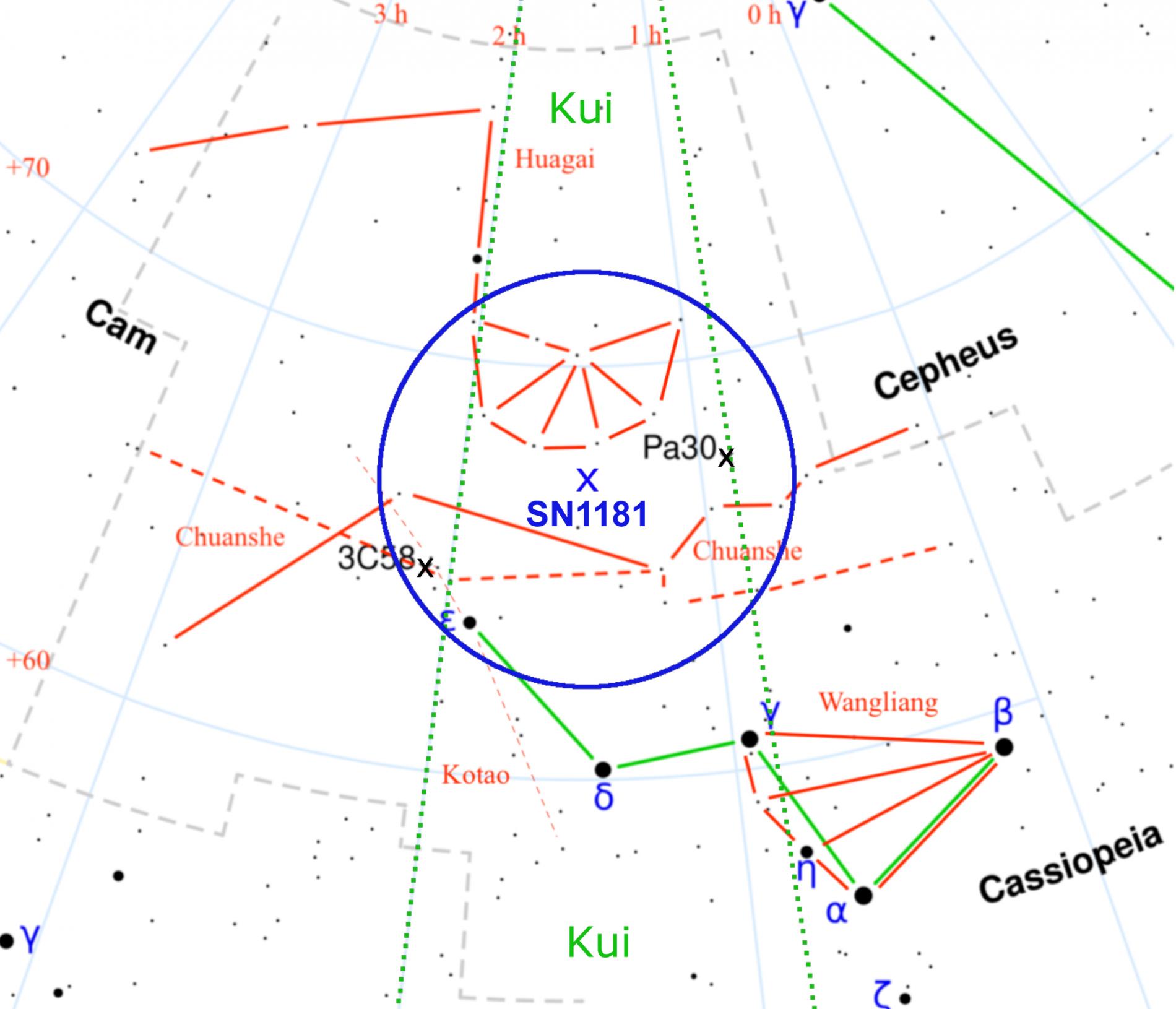Remnants of the historic supernova of 1181 suggest it originated from the merger of two stars
Chinese and Japanese texts documented the appearance of a supernova in the year 1181, and now the remnant of that explosion is located
In 1181, Chinese and Japanese astronomers observed a new star in the sky, or a "guest star," as they called supernova explosions at the time. It remained visible for about six months and is one of nine historical supernovae recorded in the Milky Way, but the only one from the last millennium that still lacked a confirmed counterpart. Now, an international scientific team has found a candidate that fits the 1181 event and poses an unusual scenario, in which the explosion could have been caused by the merger of two white dwarf stars.
“Supernova explosions can occur with the death of massive stars, but also as a result of the interaction of a binary star system. Locating the supernova remnant, or the nebulous structure that results from the explosion, is essential to identify the type of supernova”, points out Martín A. Guerrero, a researcher at the Institute of Astrophysics of Andalusia (IAA-CSIC) who is participating in the work.

Until now, the only candidate for a remnant for the 1181 supernova was the 3C58 pulsar, but a long-term study had already shown that this pulsar and its associated nebula are around 7,000 years old, an age incompatible with the guest star of 1181.
The new study has found a much more promising candidate in the star IRAS 00500 + 6713, dubbed by the scientific team "Parker's star", and the nebula that surrounds it, Pa 30, whose expansion points to an explosive event that occurred a thousand years ago. In addition to the chronological coincidence, the position in the sky of this object is also compatible with that indicated by ancient Chinese and Japanese texts.
"This star and its nebula have been proposed as the result of a very unusual type of supernova, the Iax type, which involves the merger of two white dwarf stars and for which only one other possible event has been recorded in our Galaxy. Thus, we would not only be facing the resolution of the problem of the remnant of the 1181 supernova, but also the only example of an Iax type supernova that we can study in detail", confirms Martín A. Guerrero (IAA-CSIC).

Ritter et al. "The remnant and origin of the historical supernova 1181 AD". Astrophysical Journal letters, Sept 2021.
Instituto de Astrofísica de Andalucía (IAA-CSIC)
Unidad de Divulgación y Comunicación
Silbia López de Lacalle - sll[arroba]iaa.es - 958230676
https://www.iaa.csic.es
https://divulgacion.iaa.csic.es

